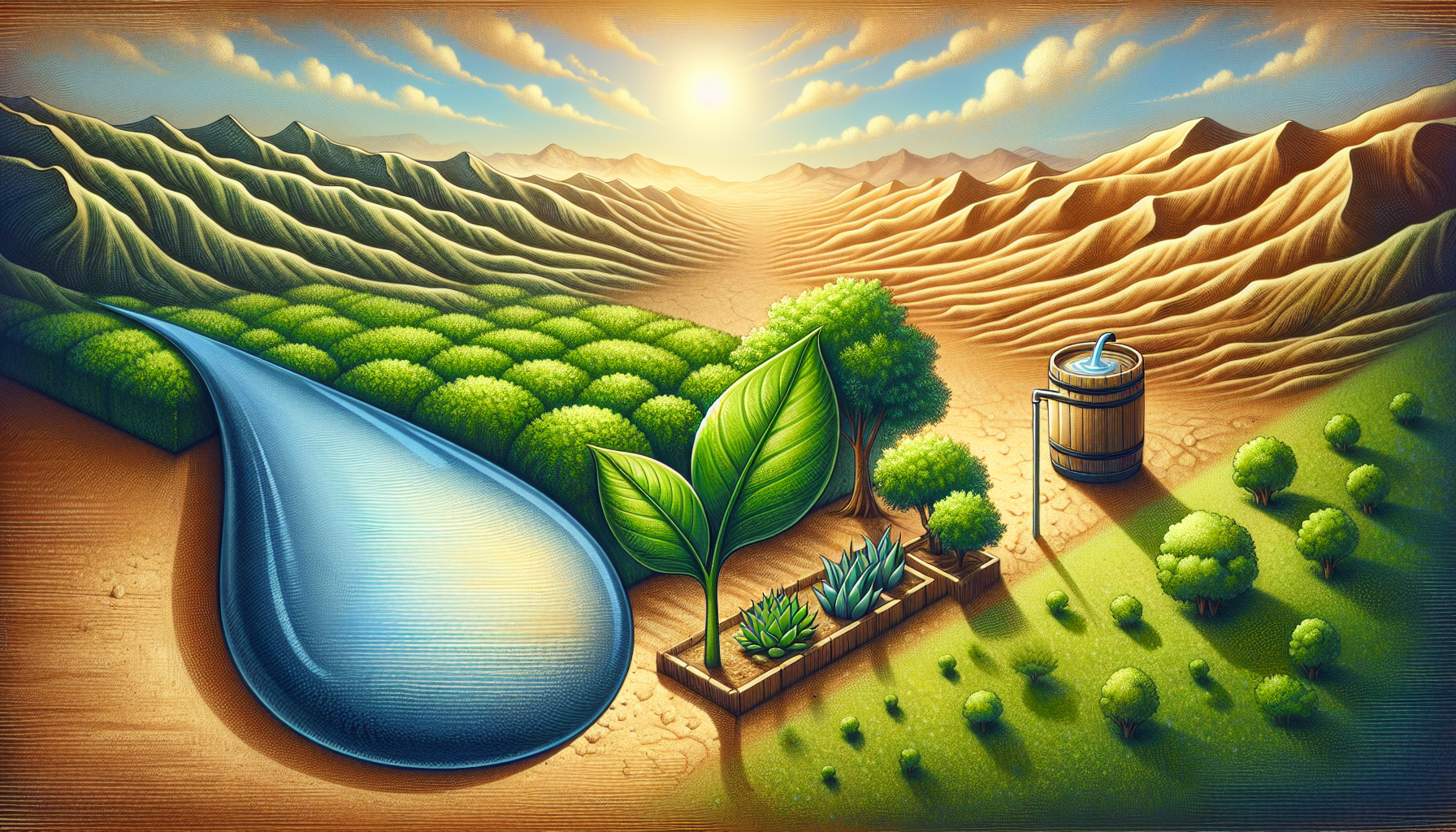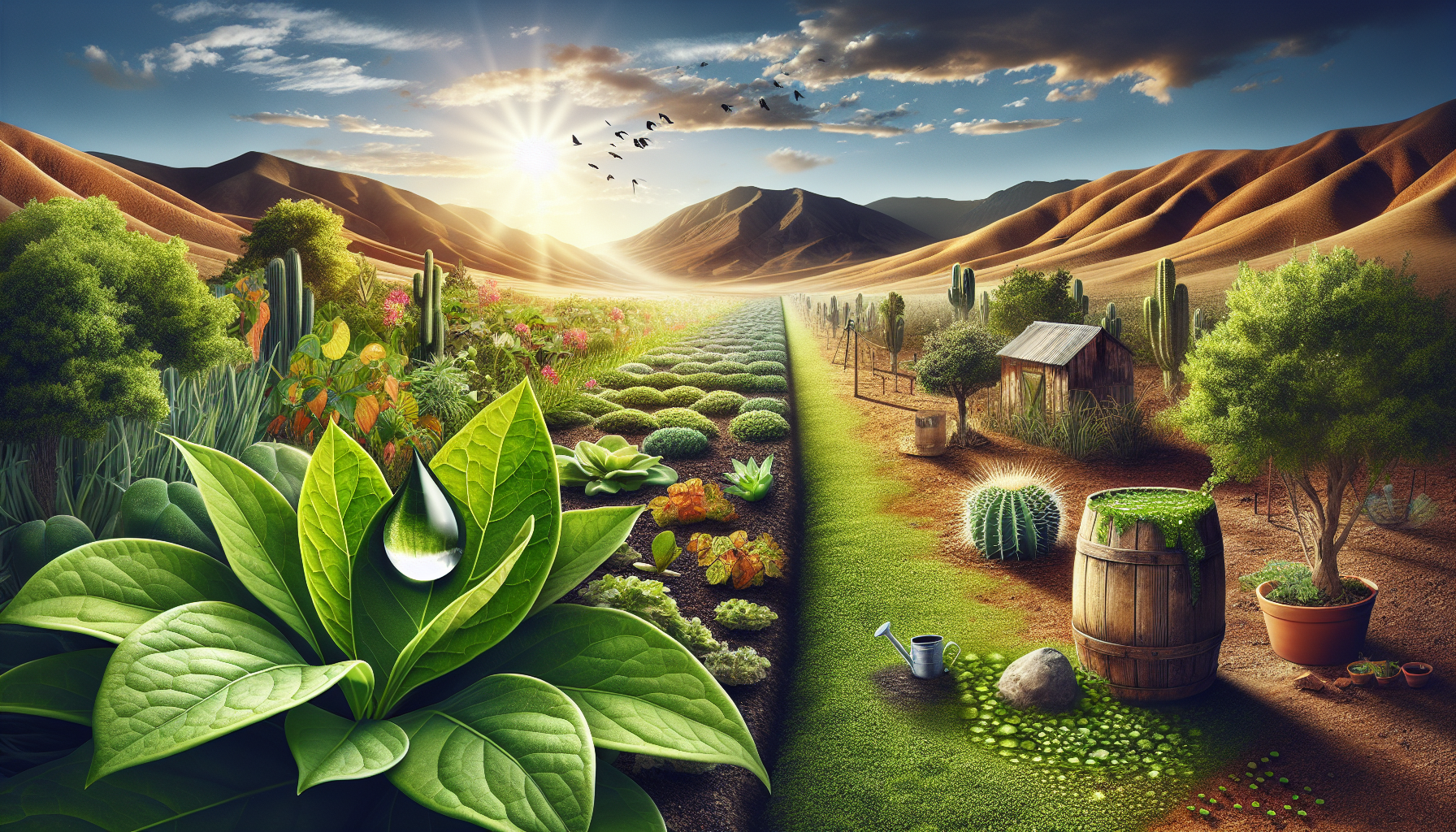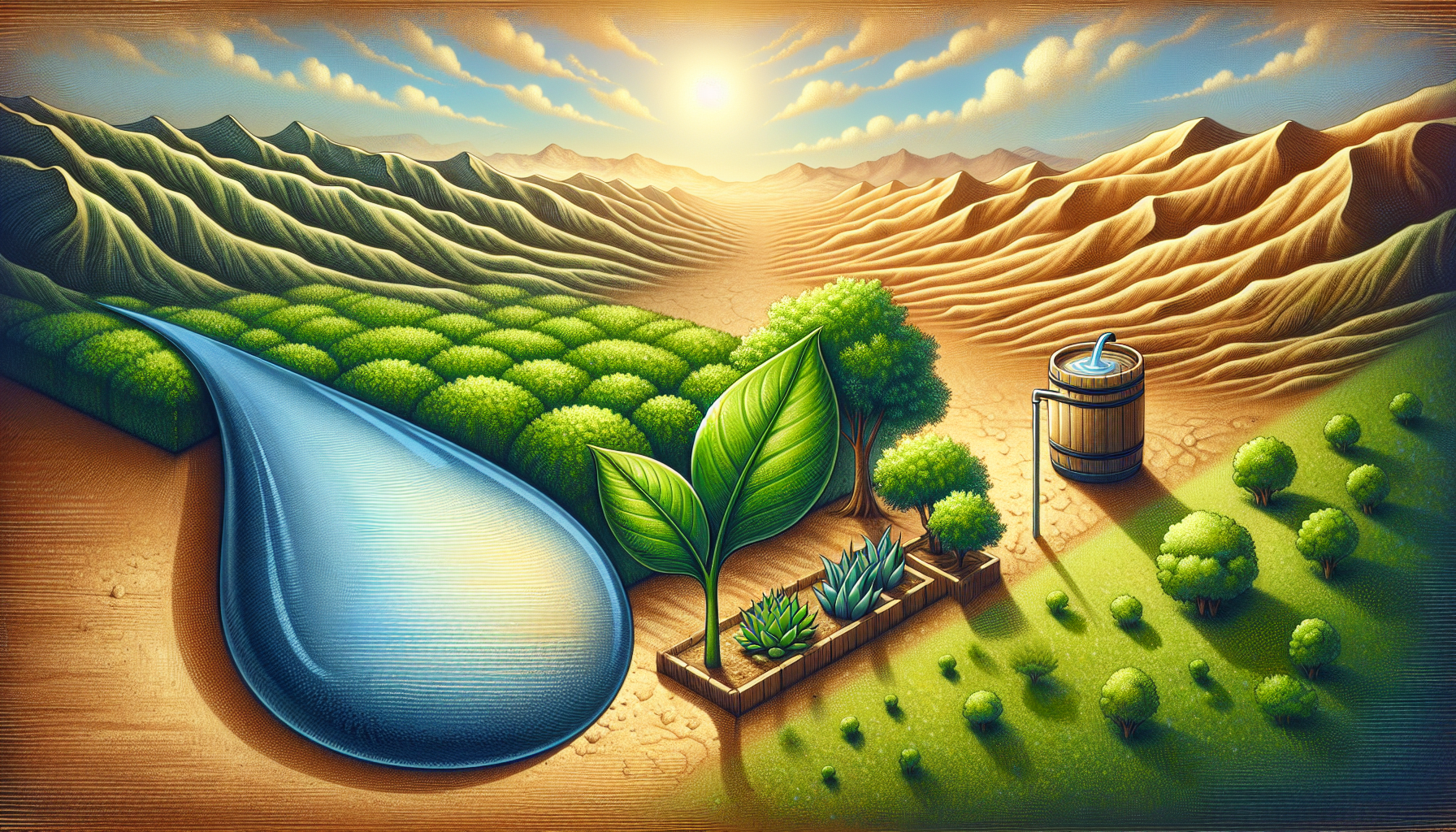You’re a passionate gardener who loves spending time in your beautiful yard. But with the increasing concern about water scarcity and the need for sustainable practices, it’s important to learn effective water management techniques for your landscaping. In this article, you’ll discover valuable tips and strategies that will help you conserve water while still maintaining a stunning outdoor space. From selecting drought-resistant plants to implementing efficient irrigation systems, these tips will not only save water but also save you time, money, and effort in the long run. Get ready to transform your landscape into a more sustainable and eco-friendly haven.
Choosing the Right Plants
Consider native plants
When designing your landscape, it’s essential to consider using native plants. Native plants are well-adapted to the local climate and soil conditions, which means they require less water and maintenance compared to exotic plants. They have already evolved to survive in your region, making them an excellent choice for water conservation.
Choose drought-tolerant plants
Another factor to consider when selecting plants for your landscape is their drought tolerance. Drought-tolerant plants are resilient and have the ability to withstand periods of water scarcity. By choosing plants that are naturally adapted to drought conditions, you can significantly reduce your water consumption and still have a beautiful and thriving garden.
Group plants with similar water needs
To further optimize water usage in your landscape, it’s a good idea to group plants with similar water needs together. This practice is known as hydrozoning. By grouping plants that require similar amounts of water, you can ensure that they receive the appropriate amount of irrigation without wasting water on plants that don’t need it. This strategy helps to create more efficient irrigation systems and promotes overall water conservation in your landscape.
Designing an Efficient Irrigation System
Use a drip irrigation system
One of the most effective ways to conserve water in your landscape is by using a drip irrigation system. Unlike traditional sprinkler systems, drip irrigation delivers water directly to the plant’s root zone, minimizing water loss through evaporation and runoff. It also allows for slow and steady watering, reducing the risk of overwatering and promoting deep root growth.
Install a rain sensor
To avoid unnecessary watering during rainy periods, it is highly recommended to install a rain sensor. Rain sensors detect rainfall and temporarily pause your irrigation system, preventing water wastage. By incorporating this simple device into your irrigation system, you can ensure that your plants only receive water when they need it, saving you money and conserving water resources.
Adjust irrigation schedules with weather conditions
Another way to make your irrigation system more efficient is by adjusting the irrigation schedules according to weather conditions. By monitoring weather forecasts and understanding how weather affects plant water requirements, you can optimize your irrigation schedules. For example, during periods of rain or high humidity, you may need to reduce or even skip irrigation, while drought spells may require increased watering. By adapting your irrigation practices to suit the weather conditions, you can maintain healthy plants while conserving water.

Mulching for Water Conservation
Select the right mulch material
Mulching is an effective technique for conserving water in your landscape. By selecting the right mulch material, you can create a protective layer over the soil, reducing evaporation and weed growth. Organic mulches like wood chips or straw are excellent choices as they also improve soil structure and fertility over time.
Apply mulch around plants
Once you’ve chosen the appropriate mulch material, the next step is to apply it around your plants. Spread a layer of mulch around the base of your plants, taking care not to mound it against the stems or tree trunks. A layer of mulch that is two to four inches thick will help to retain soil moisture, regulate soil temperature, and suppress weed growth.
Maintain the mulch layer
To maximize the benefits of mulching, it’s important to regularly maintain the mulch layer. Over time, the mulch may break down or get displaced, so it’s a good idea to replenish or redistribute it as needed. This will ensure that your plants continue to receive the full benefits of mulching, including reduced water loss and improved soil health.
Effective Soil Preparation
Test the soil’s moisture-holding capacity
Before planting, it’s crucial to test your soil’s moisture-holding capacity. This will help you understand how well your soil retains water and determine if any amendments are needed. Simple soil tests are available at garden centers or through your local agricultural extension office. By knowing your soil’s characteristics, you can take appropriate measures to improve its water retention capabilities.
Improve soil structure with organic matter
Adding organic matter to your soil is an excellent way to improve its structure and water-holding capacity. Organic matter, such as compost or well-rotted manure, enhances soil texture, allowing it to retain more water. It also promotes healthy root growth and provides essential nutrients to your plants.
Use compost to retain water
Compost is not only a valuable soil amendment, but it’s also an effective tool for retaining water. When incorporated into the soil, compost acts as a sponge, absorbing and storing moisture for your plants. It enhances the soil’s water-holding capacity, reduces runoff, and helps prevent soil erosion. By regularly adding compost to your garden beds, you can significantly improve water retention and overall plant health.

Proper Watering Techniques
Water deeply and infrequently
Proper watering techniques are crucial for water conservation in landscaping. Instead of frequent shallow watering, it is best to water deeply and infrequently. Deep watering encourages plants to develop deep root systems, making them more resilient and less dependent on frequent irrigation. This method also reduces water loss through evaporation and encourages efficient water uptake.
Water in the early morning
The time of day when you water your plants can also impact water conservation. It is recommended to water in the early morning, preferably before sunrise. At this time, temperatures are cooler, and winds are usually calmer, reducing water loss through evaporation. Watering early in the morning also allows plants to dry before nighttime, minimizing the risk of fungal diseases.
Avoid overwatering
Overwatering is a common mistake that not only wastes water but also harms plants. It’s important to understand the water requirements of your specific plants and avoid exceeding those needs. One way to determine if your plants need watering is by checking the soil moisture level using a moisture meter or simply by finger testing. By avoiding overwatering, you can conserve water and prevent waterlogged soil, which can lead to root rot and other plant health problems.
Implementing Rainwater Harvesting
Install rain barrels or cisterns
Rainwater harvesting is a sustainable practice that allows you to collect and store rainwater for later use in your landscape. One of the simplest ways to implement rainwater harvesting is by installing rain barrels or cisterns. These containers collect rainwater from your downspouts, which can then be used for irrigation purposes. Installing multiple barrels or a larger cistern can significantly increase your rainwater storage capacity.
Redirect roof runoff to garden areas
Another method of rainwater harvesting is redirecting roof runoff to garden areas. By installing gutters, downspouts, and properly designed swales or channels, you can direct rainwater from your roof to specific garden beds or areas that require irrigation. This allows you to effectively utilize rainwater without it being wasted through runoff.
Use rainwater for irrigation
Once you have collected rainwater, you can use it for irrigation purposes. This can be done by connecting a drip irrigation system or a hose to your rain barrels or cisterns. By using rainwater for watering your plants, you not only reduce your reliance on municipal water sources but also conserve water. Rainwater is free from chemicals and minerals typically found in tap water, making it beneficial for your plants’ health.
Managing Lawn Areas
Reduce lawn areas
Lawns require a significant amount of water to maintain their lush appearance. One way to conserve water in your landscape is by reducing the size of your lawn areas. Consider replacing parts of the lawn with native groundcovers, low-water-use plants, or hardscape features like patios or walkways. By minimizing the lawn areas, you can significantly reduce your water consumption while still maintaining a beautiful landscape.
Adjust mowing height
Proper mowing practices can also contribute to water conservation in your lawn areas. It is recommended to adjust your mower’s cutting height to a higher setting. Longer grass blades provide shade to the soil, reducing evaporation and protecting the root system from heat stress. Additionally, taller grass blades promote deeper root growth, making your lawn more drought-tolerant.
Consider grass alternatives
If you’re looking for ways to further reduce water usage in your landscape, consider using grass alternatives. There are many low-water-use groundcovers, such as clover or creeping thyme, that can provide a verdant and low-maintenance alternative to traditional grass lawns. These alternatives require less water and mowing, while still providing an attractive and functional landscape.
Minimizing Water Loss through Evaporation
Use mulch to cover bare soil
Mulching plays a vital role in minimizing water loss through evaporation from bare soil surfaces. By covering the soil with a layer of mulch, you create a barrier that helps retain soil moisture and reduces evaporation. This simple practice can significantly reduce water loss, keep the soil cooler, and prevent weed growth. Make sure to apply mulch around your plants and in any exposed soil areas in your landscape.
Avoid watering during windy conditions
Watering your landscape during windy conditions can lead to significant water loss. The wind can quickly carry water droplets away from your intended target, causing uneven distribution and wastage. It’s important to check weather conditions before watering and avoid irrigating on particularly windy days. By watering when the air is calm, you can ensure that your plants receive the water they need without it being lost to the wind.
Apply water directly to the root zone
To minimize water loss from surface evaporation, it’s beneficial to apply water directly to the root zone of your plants. This can be achieved by using drip irrigation or soaker hoses, which deliver water directly to the base of your plants. By avoiding overhead watering or using sprinklers that can result in water being dispersed over a wider area, you can maximize water efficiency and reduce evaporation.
Regular Maintenance and Inspection
Inspect irrigation systems for leaks
Regular maintenance and inspection of your irrigation system are essential for water management in landscaping. Periodically check your irrigation system for leaks, broken sprinkler heads, or clogged emitters. Even a small leak can result in significant water waste over time. Promptly repair any issues you find to ensure efficient water distribution and prevent unnecessary water loss.
Regularly check soil moisture levels
Regularly checking the moisture levels in your soil is crucial for effective water management. Use a moisture meter or conduct a simple finger test to determine if your soil requires watering. By monitoring soil moisture levels, you can avoid overwatering or underwatering your plants, ensuring they receive the appropriate amount of water they need to thrive.
Monitor plant health and signs of stress
Observing your plants’ health and looking for signs of stress is an important part of water management. Overwatering and underwatering can both cause stress to your plants, so it’s essential to be vigilant and adjust your watering practices accordingly. Keep an eye out for wilting leaves, yellowing foliage, or stunted growth, as these can indicate water-related issues. By promptly addressing any plant stress, you can maintain healthier plants and save water.
Educating and Engaging Homeowners
Provide water management guidelines
Water management guidelines can play a significant role in promoting water conservation among homeowners. Provide resources, such as brochures or online materials, that explain the importance of water conservation in landscaping and offer practical tips for efficient water usage. By educating homeowners about water management, you can empower them to make informed decisions and actively contribute to water conservation efforts.
Offer workshops or seminars on water-wise landscaping
Hosting workshops or seminars on water-wise landscaping can help homeowners deepen their understanding of sustainable landscaping practices. These educational events can cover topics such as plant selection, irrigation systems, soil preparation, and water conservation techniques. By creating opportunities for homeowners to learn and engage with experts, you can inspire them to adopt water-wise strategies in their own landscapes.
Create interactive educational materials
To make water management education more engaging and accessible, consider creating interactive materials. This could include videos, online quizzes, or mobile applications that provide tailored information and tips. Interactive materials can make learning about water-wise landscaping more enjoyable and encourage homeowners to actively participate in water conservation efforts.
In conclusion, effective water management in landscaping requires thoughtful plant selection, efficient irrigation systems, proper soil preparation, and mindful maintenance practices. By considering native and drought-tolerant plants, implementing water-efficient irrigation systems, using mulch, improving soil structure, practicing proper watering techniques, and incorporating rainwater harvesting, homeowners can significantly reduce their water consumption while maintaining a beautiful and healthy landscape. Regular maintenance and inspection, along with education and engagement, are essential aspects of water management that empower homeowners to make a positive impact on water conservation efforts.

